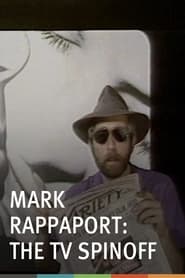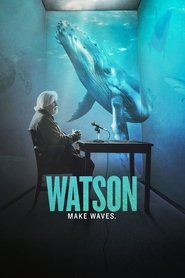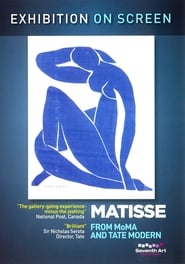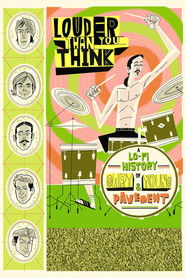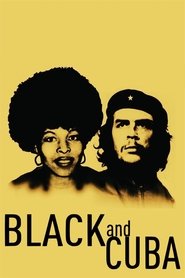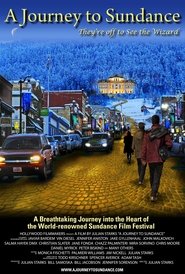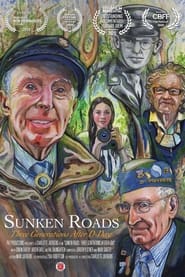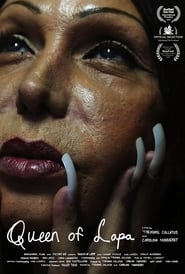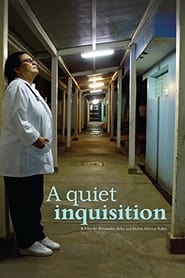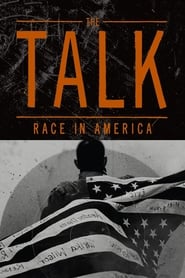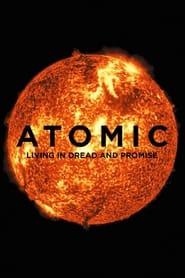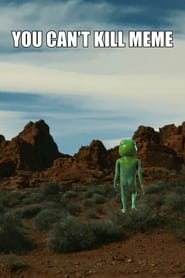Popular Documentary Movies on Kanopy - Page 149
-
Freightened: The Real Price of Shipping
2016
star 7.6In an audacious investigation, Freightened will reveal the mechanics and perils of freight shipment; an all-but-visible industry that holds the key to our economy, our environment and the very model of our civilisation. -
Mark Rappaport: The TV Spin-Off
1980
star 4In Mark Rappaport: The TV Spin-off, the filmmaker conducts a guided tour of his work that explains everything... and nothing. Rappaport shows himself to be the cinematic equivalent of Penn and Teller. -
Watson
2019
Watson
2019
star 7.3Co-founder of Greenpeace and founder of Sea Shepherd, Captain Watson is part pirate, part philosopher in this provocative documentary about a man who will stop at nothing to protect what lies beneath. -
Matisse
2014
Matisse
2014
MOMA & Tate Modern's landmark show explores the final chapter of Matisse's career when he began 'carving into colour,' creating his signature cut-outs. Audiences are invited to enjoy an intimate, behind-the-scenes documentary about this blockbuster exhibition with contributions from curators, historians and those who knew Matisse personally. Beautifully filmed footage of the exhibition featuring works including The Snail, Memory of Oceania, Large Composition with Masks and Blue Nudes is interwoven with Matisse's biography and behind-the-scenes material. Featuring special guests including Tate director Nicholas Serota; MoMA director Glenn Lowry; jazz musician Courtney Pine and Royal Ballet principal dancer Zenaida Yanowsky. -
Louder Than You Think
2023
star 6Gary Young, drummer for indie-rock icons Pavement, injected a wild-card unpredictability into the band's breakthrough, lo-fi sound. But those same gonzo impulses derailed his rock star dream. -
Black and Cuba
2015
Black and Cuba
2015
star 7.3'Black and Cuba' follows street-smart students, who are outcasts at an elite Ivy League university, as they band together and adventure to Cuba to see if revolution is truly possible. While filming their poignant encounters with AfroCuban youth, breathtaking sites and moving hip-hop performances, the travelers confront realities behind myths of color-blindness and social mobility. This edgy and artful documentary of their journey uncovers renewed hope for equality and human rights. 'Black and Cuba' is the feature film directorial debut of international human rights advocate and scholar Robin J. Hayes, PhD. -
A Journey to Sundance
2023
'A JOURNEY TO SUNDANCE' is about the spirit, dreams and struggles of independent filmmakers from all over the world, as well as my own struggles to finish this enormous undertaking. -
Pencils Down! The 100 Days of the Writers Guild Strike
2014
star 8.5In 2007, the Writers Guild of America, the Screenwriters Union, hit an impasse in their contract negotiations with the Studios. At the center of the dispute was jurisdiction over the internet. Unable to make progress, the WGA called a strike which brought Hollywood to a halt for 100 days. -
Bigger Stronger Faster*
2008
star 6.8In America, we define ourselves in the superlative: we are the biggest, strongest, fastest country in the world. Is it any wonder that so many of our heroes are on performance enhancing drugs? Director Christopher Bell explores America's win-at-all-cost culture by examining how his two brothers became members of the steroid-subculture in an effort to realize their American dream. -
Sunken Roads: Three Generations After D-Day
2020
star 7.5A young filmmaker joins a tour of WWII veterans from the 29th Infantry through celebrations surrounding the 70th anniversary of D-Day in a quest to better know her late grandfather. -
Del mero corazón
1979
Del mero corazón
1979
star 5A lyrical journey through the heart of Chicano culture as reflected in the love songs of the Tex-Mex Norteña music tradition. Performers include, Little Joe & La Familia, Leo Garza, Chavela Ortiz, Andres Berlanga, Ricardo Mejia, Conjunto Tamaulipas, Chavela y Brown Express and more. -
Functional Fitness
2016
Functional Fitness
2016
star 5.8This documentary takes a raw and introspective look into the world of Functional Fitness, illustrating what this growing trend is all about. Functional Fitness follows the stories of gym owners, athletes, and those just beginning their fitness journey. An inspiring film that explores how this fitness phenomenon has enhanced the lives of so many people. -
Boxing Gym
2010
Boxing Gym
2010
star 6.6Explores the world of a boxing gym in Austin, Texas, dwelling on the discipline of training as people from all walks of life aspire to reach their personal best. -
Queen of Lapa
2019
Queen of Lapa
2019
star 10Larger-than-life actress, cabaret performer, activist, and proud sex professional since the age of eleven, Luana Muniz - arguably one of Brazil’s most recognizable transgender personalities, shapes a new reality for a new generation of transgender sex workers in her hostel by providing a safe working environment in the dangerous neighborhood of Lapa in Rio de Janeiro. Queen of Lapa explores the day-to-day lives, quests for love, housemate rivalries in a turbulent political climate under matriarch Muniz’s watchful and guiding eye. -
A Quiet Inquisition
2014
A Quiet Inquisition
2014
star 8At a public hospital in Nicaragua, Ob/Gyn Dr. Carla Cerrato must choose between following a law that bans all abortions and endangers her patients or taking a risk and providing the care that she knows can save a woman's life. In 2007, Dr. Cerrato’s daily routine took a detour. The newly elected government of Daniel Ortega, a former Marxist revolutionary who converted to Catholicism to win votes, overturned a 130-year-old law protecting therapeutic abortion. The new law entirely prohibits abortion, even in cases of rape, incest, or when a woman’s life is at stake. As Carla and her colleagues navigate this dangerous dilemma, the impact of this law emerges—illuminating the tangible reality of prohibition against the backdrop of a political, religious, and historically complex national identity. The emotional core of the story—the experiences and situations of the young women and girls who are seeking care—illustrate the ethical implications of one doctor's response. -
The Talk: Race in America
2017
star 8Documentary about the increasingly necessary conversation taking place in homes and communities across the country between parents of color and their children, especially sons, about how to behave if they are ever stopped by the police. -
Handmaidens and Battleaxes
1990
Throughout history, the perception of nurses has ranged from wise women to witches, sots to ministering angels, handmaidens to battleaxes. The professional role of the nurse has changed dramatically. Originally the nurse held an independent, curative position in healing the sick. Most of this responsibility has since been lost. In its place, a profession has developed which, while demanding altruism and dedication, is locked into a supportive and secondary role to that of the medical profession. -
Interior. Leather Bar.
2013
star 5.2Filmmakers James Franco and Travis Mathews re-imagine the lost 40 minutes from "Cruising" as a starting point to a broader exploration of sexual and creative freedom. -
Atomic: Living in Dread and Promise
2015
star 6.6Using only archive film and a new musical score by the band Mogwai, Mark Cousins presents an impressionistic kaleidoscope of our nuclear times – protest marches, Cold War sabre-rattling, Chernobyl and Fukishima – but also the sublime beauty of the atomic world, and how x-rays and MRI scans have improved human lives. The nuclear age has been a nightmare, but dreamlike too. -
You Can't Kill Meme
2021
You Can't Kill Meme
2021
star 1A hybrid documentary feature film about the genesis of "memetic magick" and its application by the alt-right in the United States.
 Netflix
Netflix
 Amazon Prime Video
Amazon Prime Video
 Apple iTunes
Apple iTunes
 Apple TV Plus
Apple TV Plus
 Disney Plus
Disney Plus
 Google Play Movies
Google Play Movies
 Paramount Plus
Paramount Plus
 Hulu
Hulu
 HBO Max
HBO Max
 YouTube
YouTube
 fuboTV
fuboTV
 Peacock
Peacock
 Peacock Premium
Peacock Premium
 Amazon Video
Amazon Video
 The Roku Channel
The Roku Channel
 AMC+
AMC+
 Kocowa
Kocowa
 Hoopla
Hoopla
 The CW
The CW
 Vudu
Vudu
 Starz
Starz
 Showtime
Showtime
 PBS
PBS
 Pantaflix
Pantaflix
 FXNow
FXNow
 Tubi TV
Tubi TV
 Kanopy
Kanopy
 Comedy Central
Comedy Central
 Crunchyroll
Crunchyroll
 Microsoft Store
Microsoft Store
 Redbox
Redbox
 Sun Nxt
Sun Nxt
 ABC
ABC
 DIRECTV
DIRECTV
 Crackle
Crackle
 Fandor
Fandor
 Plex
Plex

